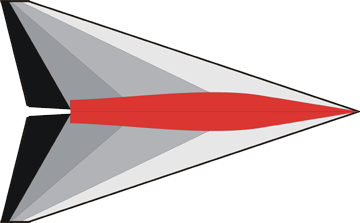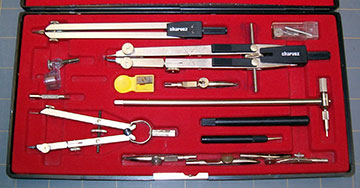Designing Radio
Control Model Aircraft
It is probably safe to say that everyone involved in this hobby has dreamt
of some really cool model airplane designs. I've had ideas for
glow
engine powered
FrisbeesTM, a canard sort of thing with a sleek
migrating bird shaped fuselage and an inverted gull wing having twin ducted
fans in pods slung underneath, a Bücker Triplane
and a lot of things I can't remember.
The Frisbee thing may not work out but I once tried bolting
a Cox .049 to the center of one. It was a resounding failure that
revolved slowly all the way to the ground.
The rest of the designs could be made to fly but I may never build them.
Most of my designs that I've built have flown. My early attempts were
not stellar examples of anything other than what can be produced by a
fledgling modeler with flawed design ideas. Nevertheless, I've always
found designing model aircraft to be enjoyable. I have no interest in
advanced aerodynamics so I do what many others do —
live by rules of thumb, learn from experience and apply the laws of
aerodynamics that I do know and understand.
If any of my designs were ever subjected to wind-tunnel testing I would
probably not be pleased by the results. I'm sure my designs have
aerodynamic flaws that I don't know about. But that's why I don't
care. I've learned a lot over the years and I'm very pleased with how
my models fly for the most part.
Regardless of my lack of expert aerodynamic knowledge, I design most of my own R/C aircraft
simply for the reason that it's fun and I can do anything I want. I
began designing my own models because I had wood lying around that needed
something done with it and I figured I'd try my hand at it.
I continued to design models because at the time kits weren't all that
great. Most of them were poorly die-cut and often the wood was warped,
too heavy or had other defects. Now I design because I enjoy it and to
have models that are unique and are purpose-designed to do what they do
better than anything commercially available.

It is not my intention to encourage everyone to design model airplanes.
I simply want to pass along what I know for those who want to try it.
These articles may help you learn how various design parameters affect a
model even if you have no interest in designing your own.
This series will cover is a variety of model aircraft design topics while
leaving you to put it all together and do the critical thinking necessary to
package it into your own successful design.
In this series
 The Process The Process
Particulars
|
![]()